A complete guide to creating an Online Portfolio (Artist, Designers & Illustrators)
Having an online portfolio can be a great place to showcase your work & getting new clients but creating one isn’t the easiest task if you have no clue where to start.
It can seem quite overwhelming, but fear not, there are plenty of services that make it an easy task for even the most inexperienced ones. This guide will show you all the steps needed and everything to consider when making an online portfolio for your work.
Let’s get started!
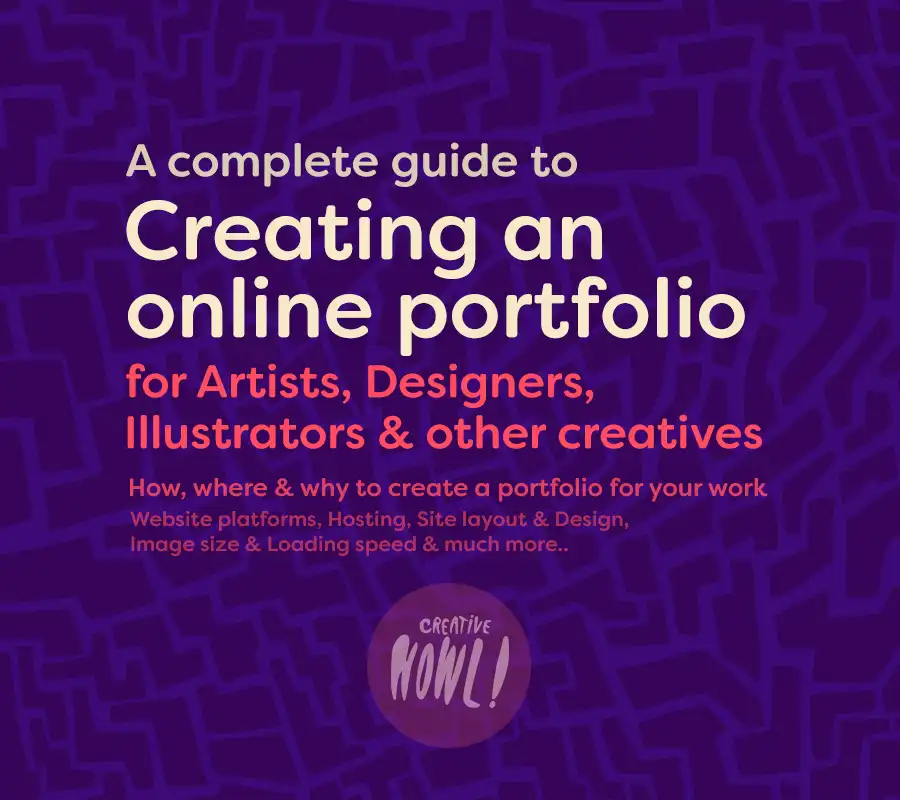
This guide contains affiliate links, what that means that if you follow some of the links on this page and make a purchase Creativehowl will earn a small commission.
Why have an online portfolio?
There’s a lot of benefits of having a portfolio online, and I’m going to start off this guide by talking about a few of my favorite reasons to get a portfolio site.

1. Give your work the spotlight it deserves
As an artist or creator, we’re always expected to create more, there’s always that next project after you’re finished with something. Having an online portfolio gives you the opportunity to take your work and put it all in one place for others to see, but also for yourself. It’s actually a great tool for observations about your own work and also self-appreciation, it’s like putting your own work on a pedestal and giving it the space and appreciation it deserves instead of just hiding it in a folder on your computer.
2. For job applications
When applying for jobs an online portfolio can be a great tool to show the work that didn’t fit into your application. Showing your work on your website also gives you more creative freedom how it’s presented (compared to a .pdf or an online application), apart from just having more control of the visual design you can add more pictures, video, links and other elements to improve the presentation.
3. Everything about you in one spot
A portfolio site can be a perfect place to gather all the information about you, your work & past clients, contact info, where to buy your work. And if anyone is interested in you and your work they know they can find everything they need in one place.
4. It looks good..
Having your own portfolio looks pretty professional, especially on a business card.
Social media vs. Portfolio site
Most creators have at least one social media account (Instagram, Behance, Facebook page, etc), and some likes to use their social pages as a portfolio online, and that’s fine but having a portfolio comes with plenty of benefits compared to having let’s say a Behance page as your primary portfolio.
You own your portfolio site
Social media account you don’t really fully own. They can be removed for a number of reasons, the company behind the site can close, they can ban you, or update the platform in a way you don’t like.
The competition
On social platforms, you’re basically competing with other artists/creatives. If you’re sending a potential client to your Behance page, for example, there’s a risk that the client will start looking at other artists/designers on the site just because of how these social platforms are structured.
Layout & Design
You’ll have much better control over the design and layout if you have your own portfolio site.
I think using sites like Instagram, Behance or similar sites is excellent for any creative, but I wouldn’t use it as my main portfolio.

Picking the Platform to build your portfolio on
We’ll be starting with deciding what platform we’re going to build our portfolio on. None of these platforms requires coding or any prior knowledge in web design to get started.
Portfolio platforms to choose from
Here’s a easy guide to help you choose the platform to build your portfolio on.
Full freedom
If you’re looking for a lot of features (blog, shop, calendar, etc) and you also want to customize the look and feel of your portfolio website, then WordPress will give you the freedom to do whatever you want. WordPress do have a higher learning curve then other more simplified website builders, but it well worth it if you got the interest in learning.
Easy setup with a lot of options
If you’re looking for an easy way to build your portfolio but you don’t want to compromise on the design and the features that the site offers, I would check out Wix or Squarespace. Two solid website building services that offer plenty of Portfolio templates to get you started.
Simple setup (if you have Adobe Creative Cloud)
If you want a simple portfolio and already have an Adobe Creative Cloud subscription, get started right away with Adobe Portfolio. Great for any illustrator or designer that use the Adobe software family already.
On a budget
If you have a limited budget and you want a simple portfolio, You can go with a Tumblr portfolio for the cheapest option for a professional portfolio.

WordPress is one of the most popular ways of creating a website,
- More possibilities then any other platform
- Highly customizable
- Great for more advanced websites
- Supports Blogs & Shops
- Many great free plugins that can add more features to your site then any other platform
- Takes time to learn (can be confusing at first)
- Higher initial cost (lower in the long run)
- If you want a feature you’re going to have to do research yourself to find how to do it

Squarespace is another popular platform amongst artists and designers. It’s a service that works great for making online portfolios.
- Easy setup thanks to their templates
- Free to try if you want to see how it works
- Possible to have an online store (higher monthly cost)
- Limited design options beyond their templates

Adobe Portfolio is a service that’s great for creatives that already uses the Adobe’s product line, their portfolio service comes bundled up in the Creative Cloud subscription, which is quite an expensive service, but if you’re already subscribed it’s an easy option to get a basic portfolio site up online.
- “Free” for Adobe Creative Cloud subscribers
- One of the easiest platforms to setup
- Made for portfolios
- Expensive (if you’re not already using Adobe Creative Cloud)
- Limited design options
- Integrated with Behance (can be a positive if you like Behance)
- Locked in Abobe Creative Cloud

Wix is a service for making websites that have been around for a long time. Use their site builder or start of your website with one of many portfolio templates.
- Plenty of portfolio templates to use
- Cheap plans available
- Easy website builder
- Online store (for a higher monthly cost)
- Unclear pricing plans
- A lot features locked behind premium plans

Tumblr is a free blogging platform that you can use as an online portfolio. It’s by far the cheapest option in this guide at only $10-15/year (the cost of a domain name). It comes with its downsides but if you’re on a tight budget this could be the option for you.
- Cheapest option around
- Free hosting on Tumblr
- Possible to use hashtags to get new visitors
- Tumblr branding on the site
- Connected to Tumblr & it’s social aspects
- Very few portfolio templates to choose from
- Limited design options
- The future of Tumlr isn’t certain

Weebly is another services for creating your own website. Either use their site builder tool and drag & drop your website to completion or use any of their templates to get started.
- Competitive monthly price
- Easy to build your site
- Possible to try for free
- Online store included in one of their cheaper plans
- The cheapest plan is not great
- Confusing pricing
- Limited amount of Portfolio themes
WordPress
34% of the websites in the world use WordPress so it’s no overstatement that it’s a popular platform to create your site on. Unlike the other website solutions in this guide, WordPress isn’t a service, it’s an open-source software you can use to build a website for free. That being said having a WordPress site isn’t free, you still need web hosting and a domain name but more on that later.
The fact that WordPress isn’t a service comes with its advantages and disadvantages. If you run your portfolio with WordPress that means you fully own your website, you do rent a space on the internet (web hosting) but it’s your spot on the internet. A service, on the other hand, could change in numerous ways and you’ll have nothing to say about it, their price could rise, they could close down, they might force ads on your site. ’With WordPress the site is yours, and that comes with a lot of possibilities.
The disadvantages
With WordPress is that it can get complicated to get things working or adding features to your site, at least compared to other website services. WordPress is still easy to get started with but I’d recommend you have a genuine interest in creating a website for yourself if you’re going to take on WordPress for your portfolio.
WordPress is especially great for larger or more complex portfolio sites that have a lot of content that you want to keep organized, or portfolios with plenty of different features on. If you have specific ideas how you want your portfolio site to look like, with WordPress you can make it happen, unlike its competitors that can be very limited when it comes to design choices and features in comparison.
Hosting & domain name
In order to set up WordPress, you’ll need to buy web hosting and a domain name. I would also recommend purchasing a premium theme that’s designed for creative portfolios. With the purchase of a theme, the initial cost will be a bit higher than other portfolio services, but after that, you’re looking at a smaller or similar yearly cost for the upkeep of your website.

Setting up your WordPress portfolio
After you got yourself web hosting and a domain name it’s time to install WordPress, you can either do this via your hosting provider in your control panel or manually via your FTP, I recommend installing via your control panel, and most hosting companies offer One-click installation for WordPress making it very easy.
During the installation of WordPress, you’re going to create a login & password for your site. After the site is up and running the first thing you’ll want to do is installing your theme, but more on that in the next section.
Price
Webhosting $5-12/month
Premium WordPress theme $40-60 (optional but recommended)
Domain name $10-15/year
Wordpress Themes & Plugins
Wordpress themes
Wordpress itself is great for making websites but where the real magic lies is in the themes, with the right theme you can create a stunning portfolio without much effort. Below I’ll be talking about my favorite premium theme for WordPress but there’s plenty of other themes you could be using, some even free.
You can check out Themeforest for a large selection of premium themes.
(above link is an affiliate link)
Salient - Responsive Theme
Salient is a premium theme for WordPress that I been using for several of my sites, Creativehowl.com included. It’s a theme perfect for portfolios but it’s also so flexible that you can build any type of site with it.
Building your site with Salient is intuitive and easy, you create every page with building blocks that you arrange the way you want, it’s basically lego for web design. You can get a better understanding of how the theme works if you head over to their product page.
If you don’t want to build the portfolio from scratch they have a library of templates that you can use to get started right away.
(above link is an affiliate link)
Recommended Plugins for WordPress portfolios
Plugins are another important part of making a great WordPress portfolio, plugins are software that can add additional features and functionality to your site. The selection of plugins is massive, if you’re missing a feature on your site chances are pretty high that there’s a plugin that can add that to your site. Down below I included some of my favorite WordPress plugins that I use for my own portfolio (all are free).
- Instagram feed – A simple free plugin that lets you show your Instagram feed on your site.
- Smush – Helps reduce the file sizes of your images, which is perfect for any portfolio that’s filled with images.
- Yoast SEO – Easy to use SEO (Search Engine Optimization) plugin
- All In One WP Security – Prevent hacking & spam attacks against your website with this comprehensive plugin.
- Akismet Anti-Spam – Anti-spam plugin, good idea to have if you allow visitors to comment on your site.
Examples of WordPress portfolios
Creatives using WordPress for their online portfolio
Squarespace
Squarespace has really blown up in popularity during the recent years and has become one of the major platforms for building your own website, especially towards creatives looking to build themselves a portfolio site.
Squarespace’s cheapest plan will cost you $12/month with more expensive plan available offering more features (shop, more storage). You can either create your site from scratch with their site builder or you can use any of their templates to get you started, the best way is to find a template that you like then edit it until you got the design and layout just right for you. Squarespace has really geared more towards creatives over the past years so there’s plenty of beautiful portfolio themes to choose from.
If you want to try Squarespace you can register and building your site without a subscription plan, and if you decide to go with Squarespace you can simply pay to get it up online. There’s also customer support available, but if read online there are mixed reviews on the quality of help they provide, so I wouldn’t rely too much on getting help from Squarespace.
Price
Squarespace $12/month minimum ($18-40/month for more features)
Domain name $10-15/year

Squarespace discount
For your first year, you can get a 10% discount on any of Squarespace’s plans, a nice bonus and money saver for new customers. Use the coupon code below or check their promo code page here. (affiliate link)
GIMME10
Squarespace portfolio examples
Artists & designers that are using Squarespace for their portfolio
Adobe Portfolio
If you’re using Adobe’s software and more specificity have an active Creative Cloud subscription then Adobe’s portfolio could be an affordable solution for a simple and clean portfolio.
Abobe’s portfolio service is included in the Creative Cloud subscription, just keep in mind that their service requires an active subscription, that’s why I would only recommend their service if you’re planning on using their products for a long time in the future.
Adobe portfolio offers a limited amount of functions, features and simple designs that will look clean and beautiful for most types of work. Setting up your Adobe portfolio is easy for anyone, even for the most inexperienced one.
Behance (Adobe’s social network for creatives) and Adobe portfolio is connected, so everything you upload to Behance will be shown on your portfolio, which is great if you’re already using Behance. But can also be a downside if you’re not that keen on using Behance.
Price
Creative Cloud (~$50/month) or Creative Cloud Photography ($20/month)
Domain name $10-15/year
Examples artists using Adobe Portfolio
Examples of how creatives used Adobe Portfolio to showcase their work
Wix
Wix is one of the best services if you want to build a portfolio quick and easy but still want a complex site. The list of features Wix come with really enables you to build the website you want without much compromise.
To name a few you can add an online store, blogs, galleries for your work, events, bookings and much more. When it comes to features it’s only really WordPress that can beat Wix, so if you’re looking for a specific feature for your portfolio it can be a good idea to check if Wix has it.
Wix comes with a website builder like many of the services on the list, and also a library of portfolio templates that you can use to start off your site. As of writing this guide they have 24 portfolio templates to choose from (and several hundreds of other templates).
Another small feature that Wix offers is the Logo maker, it’s a simple tool that you can play around with if you’re looking to create a clean logo for your brand, this is more suited for creatives with no experience in graphic design.
Price
Wix ($11/month or $14/month depending on plan)
Domain name $10-15/year

Plans
There are several subscription plans to choose from on Wix and picking the right plan for you isn’t the easiest task just because of how unclear they made it, I’ll try and make it more clear what each plan offers and what plans might suit a creative portfolio.
One of the cheaper plans, Combo is $11/month and would suit many smaller portfolio, the bandwidth and storage are limited but still more than enough for most. If you don’t want to worry about having your storage or bandwidth running out you can go with the Unlimited plan ($14/month) which add more storage and bandwidth, and not much ells.
If you want to have a shop on your website and be able to accept payments you need to have at least the Business plan ($20/month). There are more expensive plans beyond the standard Business plan but that’s not really needed for most portfolios.
I would also highly recommend a custom domain name for your Wix website, that will be an additional cost of $10-15/year.
Wix portfolio examples
Illustrator portfolios using Wix
Weebly
Weebly is another web hosting service that suits perfectly for creative portfolio sites, you can either create your own site or use one of their portfolio themes to start off your portfolio. Their plans start at a really low monthly cost but having the Pro plan is recommended ($12/month), anything below that and your site will have ads on it. The Pro plan has a solid amount of features at a reasonable price. I would also recommend getting a domain name for your portfolio so you don’t have to use “yourname.weebly.com” and that’s a small additional cost ($10-15/year).
Weebly offers a limited free option which is nothing I would recommend for any professional portfolio but it’s great if you just want to try out the platform to see how the website creator works and see if it suits you. The free option comes with Webbly branding/ads, no custom domain name and limited storage space.
Weebly is one of the cheaper options if you’re looking to have an online store on your site, with the PRO subscription, (+ 3% transaction fee) you can get your store up and running.
Sadly there isn’t that many portfolio themes to choose from on Weebly but that doesn’t have to be a big issue as long as you’re after a simple site and not something too complex. You can also use their editor to build your site from scratch, my recommendation would be to get a free account to see if the website builder is something that will work for you.
Price
Weebly $12/month (or more)
Domain name $10-15/year
Weebly portfolio examples
Artists using Weebly as their site platform
Tumblr
Next platform is great for any artist or designer on a budget, this is as cheap as it gets when it comes to online portfolios. We’re going to use the free blogging platform Tumblr to create a portfolio site on a budget.
After you signed up for a free Tumblr blog your next step will be to download a portfolio theme to customize your site, there are a handful of simple free themes made for portfolios. You won’t be able to customize your site that much but it will look good if you only want a simple site, but more on that in the full guide where I show you my favourite Tumblr themes.
I’d also recommend you get a domain name if you plan on getting a Tumblr portfolio, otherwise, your address going to be something like this “yourname.tumblr.com” which doesn’t look that professional, to be honest, but a domain name cost around $10-15/year so it’s not an investment anyway.
Price
Tumblr Free
Domain name $10-15/year

If you think a Tumblr blog would work as a portfolio or you I suggest you check out our previous guide, How to create a professional online Portfolio on a budget, where I’ll show you step by step how to setup your Tumblr portfolio. You’ll have your portfolio up and running within the hour, it’s that easy.
Tumblr portfolio examples
Examples of Tumblr portfolios
Domain names & Web Hosting
Domain name
A domain name is the web address for your website. Most creatives pick either their name, an artist name or studio as their domain name. It’s the most common to use .com domains, but you can pick either a specific one for the country you’re from (.uk, .fr, .es, etc) or something you think look good (.net, .org, etc). It’s always a good idea to check to see what domains are available because if you have a common name there’s always a risk that it’s already taken.
You can check to see if your domain name is available for registering over at Hostgator by following the button below.
(affiliate link)

Webhosting
Webhosting is basically a space on the internet that you rent. The only platform that you need to buy hosting for is WordPress, the rest of the mentioned services has hosting included in their plans. There’s plenty of hosting providers out there but I would recommend Hostgator, it’s a solid service at a good price, but any other of the big web hosting services would also work (like Godaddy, Bluehost or any other).
For an online portfolio, you usually can pick one of the cheaper hosting plans that they offer unless you know you need the extra storage space or bandwidth for your website.

Portfolio layout & design
Layout & Portfolio structure
Here are some suggestions on different sections you can use to structure your portfolio to create a pleasant user experience. The larger your portfolio may be the more important it gets to have an easy to understand navigation.
Contact page
The contact page is a section where you can get info on how to contact you, it should have a clear layout and easy to find.
- Some have a contact form you can fill in to contact you. If you use a contact form it can be a good idea to also include your e-mail just because some people might prefer emailing you directly.
- Apart from an email, you could also include a phone number and a physical address.
- If you have an agency you can include their contact info here too.
- Having your contact info and “About page” merged into one page is also an option. Just remember that finding your contact info should be an easy task for your visitors.
Categories
- Any portfolio and especially If you have a lot of work on display will benefit from structuring your work in categories. What these categories will depend on what makes sense for your work and portfolio.
- You can also use categories to highlight a specific type of work that you want more people to see. For example, if you have a bunch of commissioned work it could make sense to make a category with commissioned work, that would be a way to bring attention that the work in that category is commissioned and that you have experience in taking commissions.
- Structuring your portfolio will also help visitors navigate through your portfolio, and it will be especially useful if you’re doing work in many different fields or if you just have a lot of work to show on your site.
Blog
A blog can be a great addition to your portfolio, especially if you want to give your site a more personal touch and maybe go in more in-depth about your work. How people use their blogs varies a lot though, below I’ll list some ideas what you could do with your blog. (if you plan on having a blog just make sure the platform you’re creating your site with support blogs).
- If you have a large portfolio a blog can be a great place to post updates about new things happening on your site.
- A blog can be a great tool to add a personal touch to your portfolio and let people get to know you. You can share things that inspire you, process pictures of upcoming work, other creators that you like, your studio place just to name a few ideas.
- It’s also an excellent spot to post about upcoming exhibitions, events or if your work is about to be featured somewhere.
About page
It’s common to have an About page, these pages will have information about the artist/designer behind the work.
- I personally love it when artists and designers write something personal about themselves here, hobbies, personality, interests, inspiration and things like that to add a personal touch to the site.
- You can also include a picture of yourself here.
- Use the About page to let your visitors get to know you.
- You can include your resume, past clients, exhibitions here.
- Links to Instagram, Behance or any other social media.
Design
Examples of others online Portfolios
A great way to get inspired about your portfolio’s design is to see how other creatives have done their sites. I would start with checking out your personal favorite artists, designers and illustrators and see how they structured and designed their portfolios. And if you want even more inspiration you can check out our list of 16 illustration portfolios, it’s a great source of inspiration even if you’re not an illustrator yourself.
Branding (your name)
A common mistake I often see on artist and design portfolios is when their name isn’t included enough. As an artist, designer or creative your name is basically your brand, and not including it can lead to some problems and confusion, one of the bigger problems that can happen is when Google and other search engines won’t show your site when people are googling your name just because you haven’t included your name on the site.
This doesn’t have to be a big problem and just including your name here and there on the site will be enough. Here are some suggestions.
Where to include your name
- The meta title of your site
- In the file name of your work’s images
- Watermarking or signing the images of your work
- Here and there throughout the website (About page, Contact page or any other place)
- In the domain name of your portfolio website
- In the header of your page
Fonts
If you’re looking for free fonts for your portfolio I’d suggest you start with Google Fonts & Font Squirrel, both are great places to find free fonts to use (even for commercial use).
If you seen a font you think would look great on your own portfolio but you don’t know the name of the font you can use a tool like What the font.
Simply download or take a screenshot of the font yours interested in, then upload it to their site and they’ll try their best to identify the font in the picture, it doesn’t work 100% of the time but often it works great.
Shop/Online Store
Having a shop on your website can be a great addition to your site, what kind of products you’d like to sell is up to you but there’s plenty of options if you’re looking to sell your work.
Some of the website platforms on this list supports having a shop on your site, but not all.
- WordPress – With the help of the free plugin WooCommerce, you can get your own shop on your WordPress site. It’s a flexible plugin used by millions of sites already.
- Squarespace – Business package ($18/month & 3% transaction fee) includes a shop.
- Wix – Business Basic plan ($20/month, no transaction fee)
- Weebly – The Pro plan includes a online shop for your site ($12/month, 3% transaction fee)
Selling on an Online Marketplace
Etsy
If the platform you built your site on doesn’t support an online shop or if you’re not happy with what they’re offering, Etsy could be a great alternative. Etsy is one of the biggest online platforms when it comes to selling handmade art, prints, and craft. Using Etsy comes with its benefits, with the biggest one being that if you sell on Etsy you can take advantage of their popular marketplace and bring in customers without even marketing your shop.
You can use Etsy either by linking to your shop on your online portfolio or embed items from your shop on your portfolio.
Etsy has a 5 % Transaction Fee + 4 % Payment Processing
(affiliate link)


Print on demand
Print on demand shops can be a great option for any visual artist that want an alternative to selling your own work but don’t want to spend that much time on it.
How these sites work is that you upload your illustrations, art or photographs to their platform and then start selling products with your art on them. It can be on anything from t-shirts, phone cases, notebooks and a lot of other products. The shops will handle everything (shipping, payments, etc) and all you have to do is upload your work. The downside is that you’ll earn much less compared to if you’d sell your work yourself, print on demand sites will pay around 10-20% for each sale.
It’s a hassle-free option for anyone who can’t be bothered with handling a shop of their own. If you want to know more you can read my other guide about Print on demand sites.
Image size & Load speed
Most portfolio sites are going to have a lot of images on them and that’s why it’s extra important to try and minimize the number of large images on your portfolio, otherwise, that might lead to long loading times which will create an unpleasant and slow experience for your visitors.
What size should I aim for?
What file size your images should have will vary a lot for artist to artist, some work needs to be in high resolution in order to be presented properly and other don’t really lose that much quality by turning the image size down. I suggest using Photoshop’s “Save for web” function, it’s a great tool to get the file size down without hurting the quality that much.
My best suggestion is to experiment with your images and see how low you can get your images without losing too much quality.
Animated work & videos
If you have animation on your portfolio it could be a good idea to avoid .gifs on your site, gif animations are usually quite large in size and can cause long loading times. I would recommend using HTML5 videos (if your platform supports it), or if you have longer videos upload them to Youtube or Vimeo and embed them on your site.
Sometimes .gifs is the best option but make sure that the file size is reasonable in order to keep the loading times down.
I like to use .mp4 format (low framrate & quality) and that usually dose the trick for me, small in size but decent in quality. If your website builder dosent support uploading your own videos to your site you can try and embed your video with HTML, this is what I like to use.
HTML for embeding video
<video src=”LINK TO VIDEO.mp4″ autoplay=”autoplay” loop=”loop” muted=”” width=”500″ height=”400″>
</video>
Test your site speed
When testing the loading speed of your site it can be a good idea to use an online tool for that. Testing the speed on your own by refreshing the page won’t give you a good indication on how long the website takes to load, your site will load fast just because you download the data from it already (images, cookies, etc). Here are some free online tools you can use to get a better understanding of the loading speed.
- GTmetrix let’s you test your websites speed and gives suggestions on how you could improve it.
- Pingdom website speed test is another tool, Pingdom let’s you choose the location where the site should be tested from, great if you mostly get traffic from your home country from example.
- Last we have Google’s PageSpeed insights which are a tool that especially great for testing the loading speed on mobile versions of your site.
Related posts

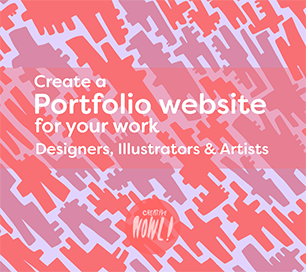
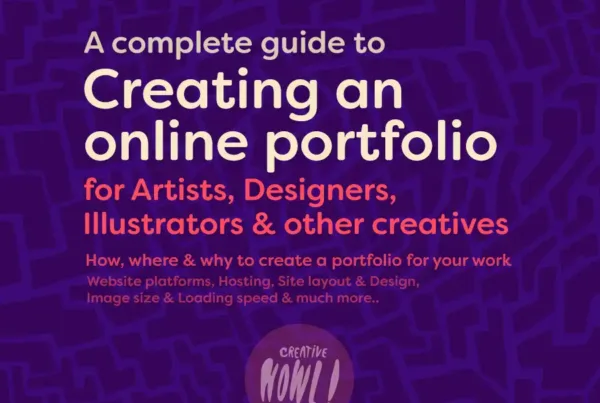














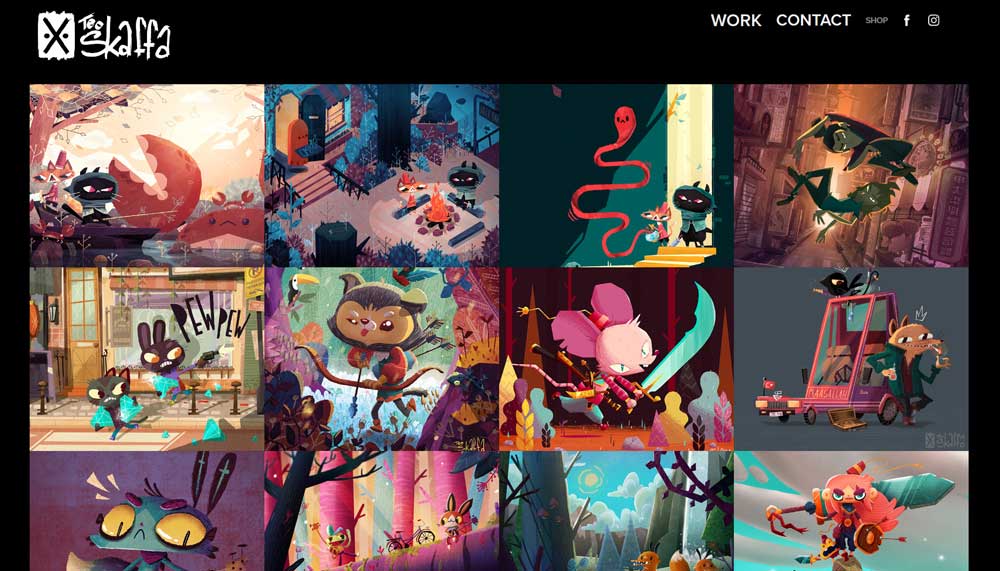
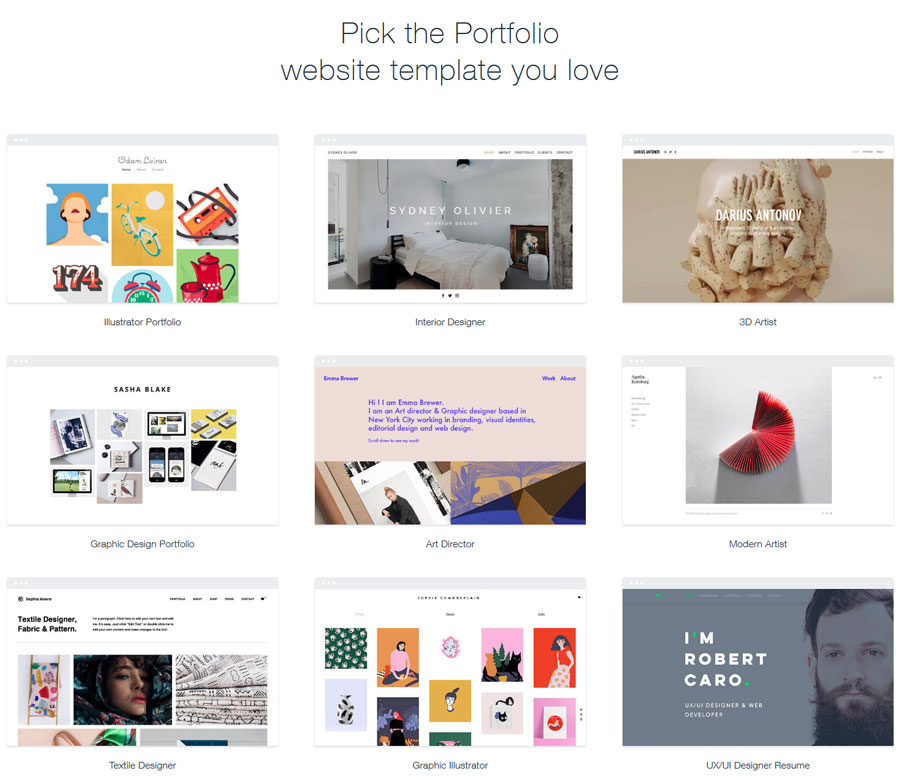
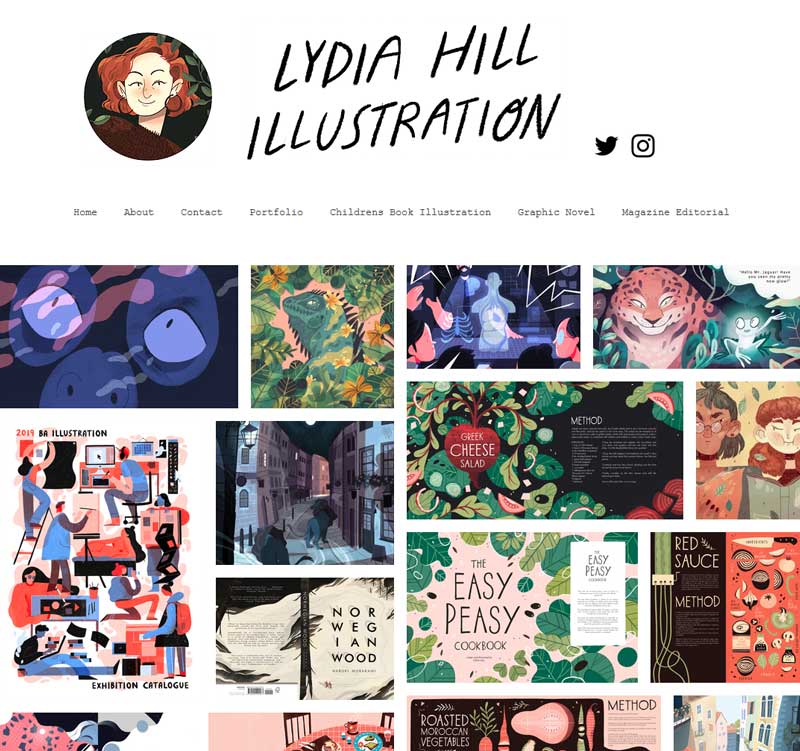








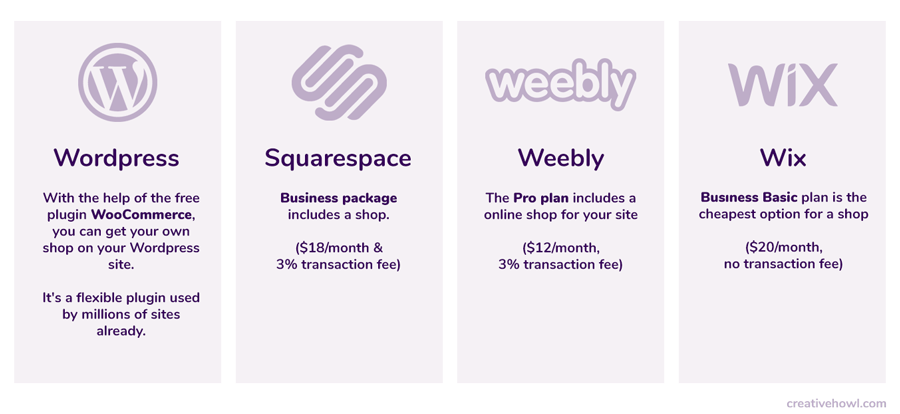



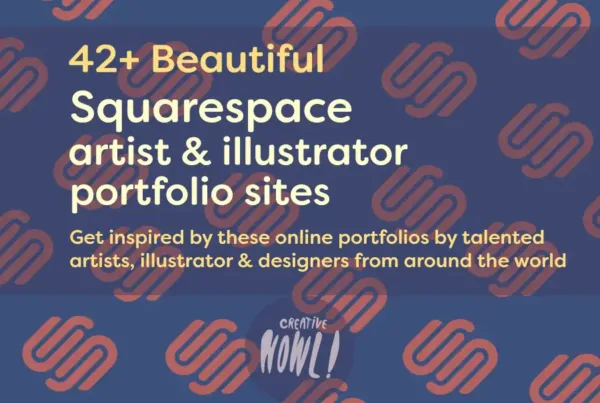

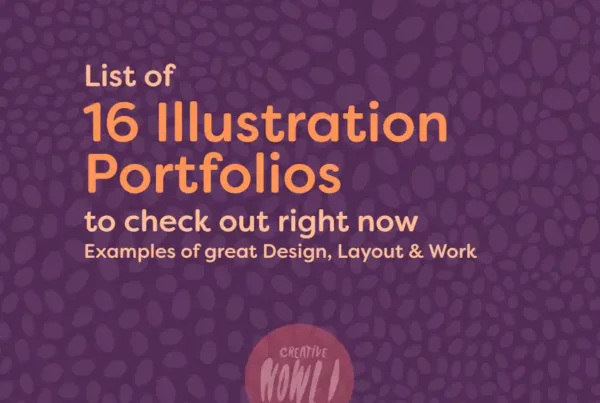
I just discovered this through your other Instagram account, Illustration Howl. I just want to say thank you for putting the time and effort into making this website. It’s extremely helpful and has tons of valuable insights! :)
Ah thank you so much! Feels great hearing, I put alooooot of effort into my guides so that’s fantastic to know :)